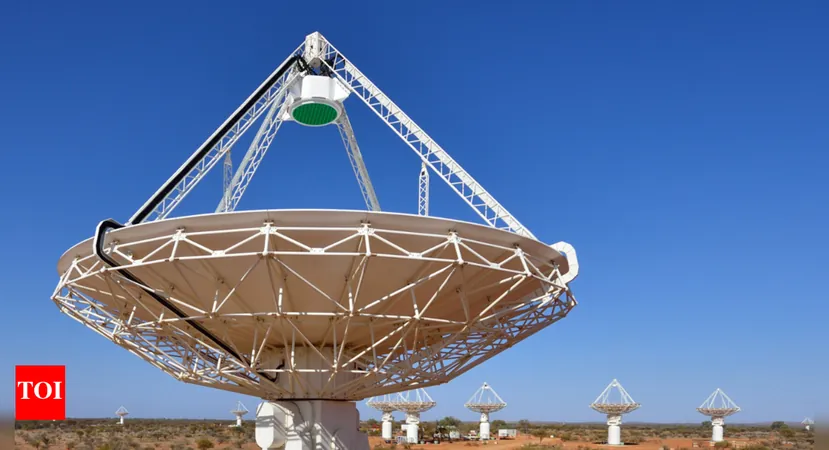
Scientists Stunned by Mysterious Cosmic Signals from New Space Object
2025-06-01
Author: Liam
Unraveling the Mystery of ASKAP J1832-0911
An astonishing discovery has emerged from the southern skies! Astronomers in Australia have detected a mysterious cosmic entity known as ASKAP J1832-0911, which emits eye-catching radio and X-ray bursts every 44 minutes—an unprecedented phenomenon that's leaving scientists scratching their heads.
Utilizing the advanced capabilities of the Australian Square Kilometre Array Pathfinder (ASKAP) and NASA’s Chandra X-ray Observatory, researchers observed that these bursts last for approximately two minutes, resurfacing at regular intervals. This unique behavior designates ASKAP J1832-0911 as a long-period transient (LPT), a classification that challenges our understanding of stellar remnants and opens up thrilling questions about the universe.
ASKAP J1832-0911: A Cosmic Enigma
Unlike any known star or pulsar, ASKAP J1832-0911 behaves in ways that defy current astrophysical models. Traditional pulsars send out rapid bursts lasting mere milliseconds or seconds, whereas this enigmatic object exhibits a rhythm of signals that switch on and off every 44 minutes. This consistent pattern is baffling, pushing scientists to reconsider existing theories about how stellar remnants function.
Possible Theories Behind the Signals
Could ASKAP J1832-0911 be a new type of magnetar, an extremely magnetic remnant, or part of a binary system featuring a white dwarf? While these hypotheses have sparked interest, they fail to completely explain the distinct signaling pattern observed. The regularity and intensity of the signals suggest that we may be dealing with unknown gravitational forces or brand-new physics altogether!
The Role of Advanced Observatories
Thanks to the collaborative efforts of ASKAP and Chandra, this discovery has gained momentum. While ASKAP was crucial for detecting the radio signals, Chandra confirmed the concurrent X-ray emissions from the same source. This combination helped rule out potential interference, strengthening the case for ASKAP J1832-0911’s unique status.
The Significance of the Discovery
This finding could signal the dawn of a new class of cosmic bodies, offering insights that could redefine our understanding of astronomical phenomena. Long-period transients are a rarity, and this particular object has the potential to illuminate the mysteries of dead stars and high-energy space events. It underscores the critical need for continuous sky monitoring to catch such rare occurrences.
What’s Next for Researchers?
Astronomers are gearing up for a wider search across the cosmos, using the same observational tools to hunt for additional signals like those from ASKAP J1832-0911. Discovering more of these elusive objects could either confirm ASKAP J1832-0911 as a one-off marvel or unveil a previously hidden population of similar entities. Future research aims to dig deeper into its origins, energy sources, and what this could mean for the larger tapestry of space science.
Stay tuned as we dive further into this cosmic mystery!









 Brasil (PT)
Brasil (PT)
 Canada (EN)
Canada (EN)
 Chile (ES)
Chile (ES)
 Česko (CS)
Česko (CS)
 대한민국 (KO)
대한민국 (KO)
 España (ES)
España (ES)
 France (FR)
France (FR)
 Hong Kong (EN)
Hong Kong (EN)
 Italia (IT)
Italia (IT)
 日本 (JA)
日本 (JA)
 Magyarország (HU)
Magyarország (HU)
 Norge (NO)
Norge (NO)
 Polska (PL)
Polska (PL)
 Schweiz (DE)
Schweiz (DE)
 Singapore (EN)
Singapore (EN)
 Sverige (SV)
Sverige (SV)
 Suomi (FI)
Suomi (FI)
 Türkiye (TR)
Türkiye (TR)
 الإمارات العربية المتحدة (AR)
الإمارات العربية المتحدة (AR)